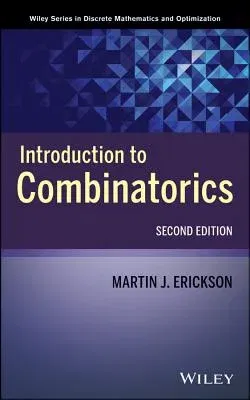Praise for the *First Edition
- "This excellent text should prove a useful accoutrement for any
developing mathematics program . . . it's short, it's sweet, it's
beautifully written." --The Mathematical Intelligencer
"Erickson has prepared an exemplary work . . . strongly recommended for
inclusion in undergraduate-level library collections." --Choice
Featuring a modern approach, Introduction to Combinatorics, Second
Edition illustrates the applicability of combinatorial methods and
discusses topics that are not typically addressed in literature, such as
Alcuin's sequence, Rook paths, and Leech's lattice. The book also
presents fundamental results, discusses interconnection and
problem-solving techniques, and collects and disseminates open problems
that raise questions and observations.
Many important combinatorial methods are revisited and repeated several
times throughout the book in exercises, examples, theorems, and proofs
alike, allowing readers to build confidence and reinforce their
understanding of complex material. In addition, the author successfully
guides readers step-by-step through three major achievements of
combinatorics: Van der Waerden's theorem on arithmetic progressions,
Pólya's graph enumeration formula, and Leech's 24-dimensional lattice.
Along with updated tables and references that reflect recent advances in
various areas, such as error-correcting codes and combinatorial designs,
the Second Edition also features:
- Many new exercises to help readers understand and apply combinatorial
techniques and ideas
- A deeper, investigative study of combinatorics through exercises
requiring the use of computer programs
- Over fifty new examples, ranging in level from routine to advanced,
that illustrate important combinatorial concepts
- Basic principles and theories in combinatorics as well as new and
innovative results in the field
Introduction to Combinatorics, Second Edition is an ideal textbook for
a one- or two-semester sequence in combinatorics, graph theory, and
discrete mathematics at the upper-undergraduate level. The book is also
an excellent reference for anyone interested in the various applications
of elementary combinatorics.

